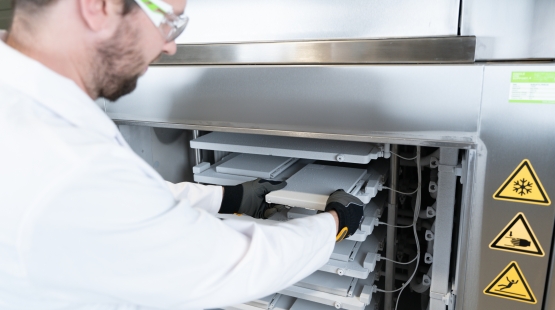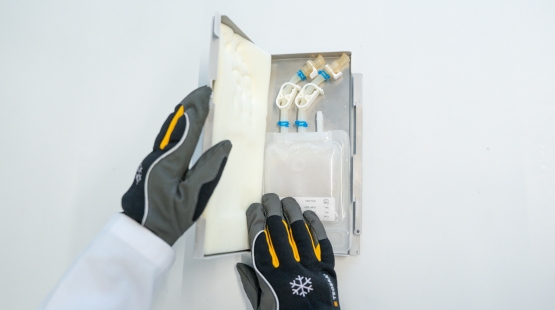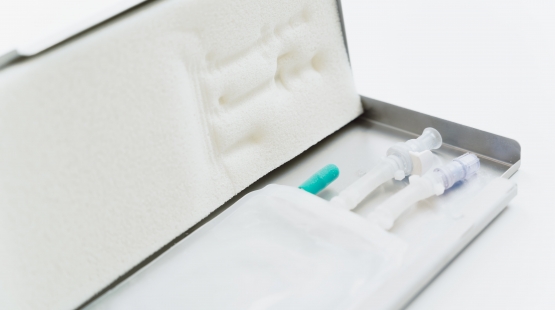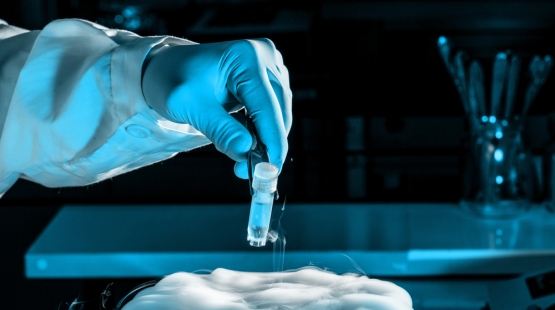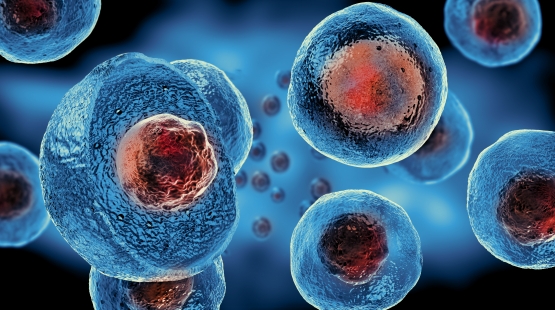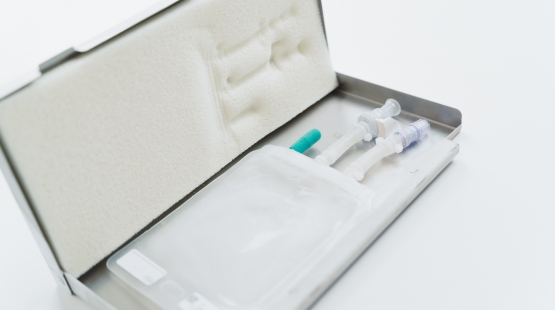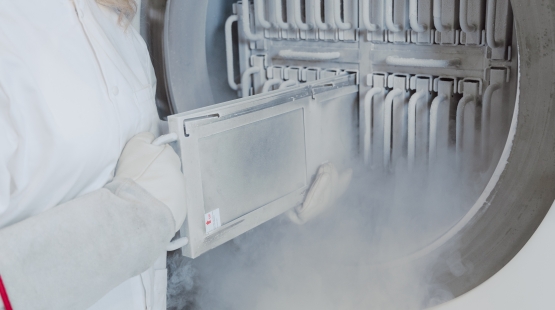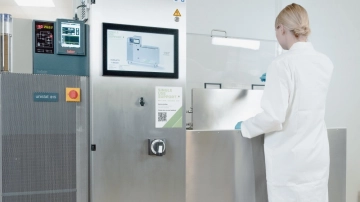Cell banking: Definition, Process & Manufacturing
Table of contents
ShowCell banking plays a key role in securing valuable cell lines and biological resources for future research and applications in the field of biotechnology. Researchers and scientists rely heavily on cells as building blocks for their studies, spanning from basic research to drug development and breakthrough therapies, including monoclonal antibodies or cell and gene therapies.
This article aims to provide a comprehensive overview of cell banking, its definition, importance, and the essential components involved in establishing and maintaining cell banks.
We will explore the advantages of cell banking, the different types of cell banks, the manufacturing process, and the array of services and solutions available in the market to assist researchers in their pursuit of accelerating drug development with cell banking.
Cell banking definition
Cell banking can be defined as a systematic process of preserving and storing cell lines under controlled conditions for future use in various biotechnological applications. The purpose of cell banking is to maintain a renewable and stable supply of well-characterized cells, ensuring cell viability and functionality over an extended period.
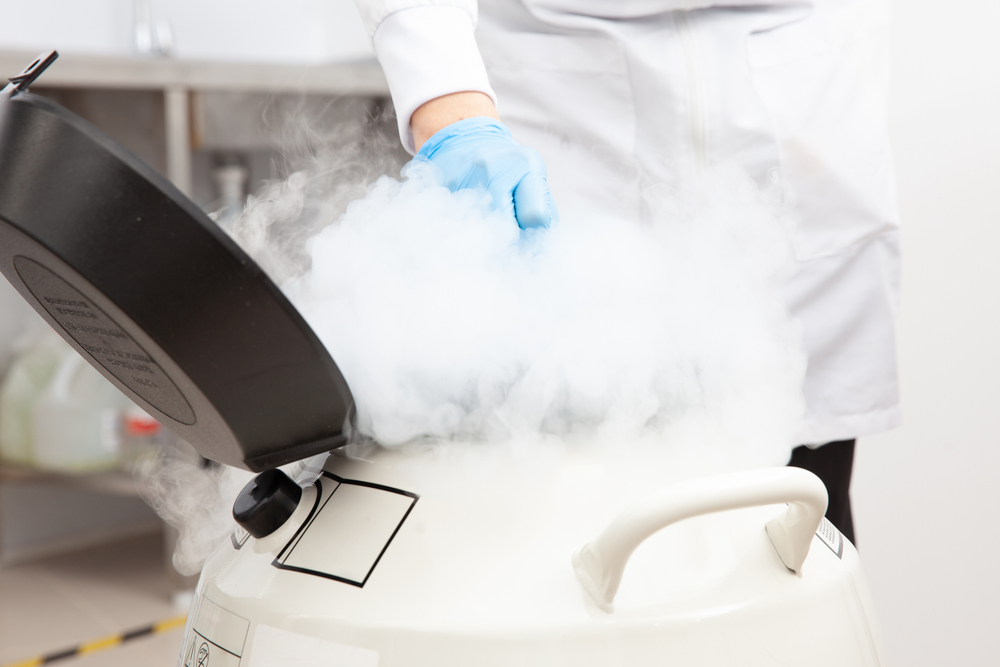
Importance of preserving cells for future use
In biotechnological research and development, it is of importance to preserve cell lines ready for use. Cell lines are tools that carry unique genetic traits and specific characteristics, making them essential for numerous scientific investigations. By banking these cells, researchers can ensure their availability for future studies, minimizing the risk of losing valuable and rare cell lines due to contamination, genetic drift, or accidental destruction.1
Most common cell lines used in biopharma are:
- bacterial cells
- yest cells
- insect cells
- plant cells
- mammalian cells (e.g. CHO or HEK cells)
Role of cell banks in research & drug development
In research, cell banks provide a stable foundation for reproducible experiments, enabling scientists to compare and validate results across studies. Additionally, cell banks serve as essential starting materials for the development and production of biotechnological products, including pharmaceuticals and vaccines.
Through systematic cryopreservation and cell banking processes, cell banks secure cells at different stages of development, allowing researchers to access a diverse range of cell types and ensuring a steady supply of high-quality cells for various applications.
Advantages of Cell Banking
Maintaining a cell bank offers benefits for researchers and the biotechnological industry. The establishment of both a master cell bank (MCB) and a working cell bank (WCB) brings forth advantages that enhance the efficiency and reliability of scientific endeavors.
Overview of the advantages of cell banking:
- Ensuring reproducibility
- Ensuring continuity
- Speeding up drug development & production
- Cost savings
- Facilitating clinical trials
- Standardized research
- Scalability
Ensuring Reproducibility and Consistency in Experiments
One of the primary advantages of cell banking lies in its ability to ensure reproducibility and consistency in scientific experiments. By preserving and using cell lines after well characterization, researchers can reduce experimental variability and achieve consistent results across different studies. On the other hand, risks regarding cell loss due to, e.g. contamination, can be handled more easily.
Reducing Time and Costs in Cell Line Development
Cell banking significantly expedites the cell line development process, resulting in time and cost savings for researchers and biotechnological companies. The process of characterizing and validating cell lines is both time-consuming and resource-intensive. However, by creating and maintaining a robust cell bank, researchers can source verified cell lines, such as CHO cells or bacterial cells.
Facilitating Research and Clinical Trials
Cell banks serve as valuable resources that drive the progress of research and clinical trials. With readily available and authenticated cell lines at hand, scientists can quickly initiate studies and evaluate the efficacy of potential therapeutics or treatments. The use of standardized and validated cell lines from a cell bank ensures the reliability and comparability of experimental data, supporting regulatory submissions and facilitating the transition from bench to bedside.2
Scalability
By employing working cell banks as a reliable source of starting material, bioprocessing steps, such as the seed train intensification, become more streamlined, efficient and scalable. Researchers can bypass the need for repetitive expansion and validation steps, reducing the time required to scale up production. Consequently, this approach fosters the development and manufacturing of therapeutic agents, leading to faster access to life-saving treatments for patients. With regard to seed trains, this would result in a more efficient transferal of cells from small-scale cultures to larger-scale bioreactors for the production of biotechnological products.
Types of cell banks
Cell banks are categorized into different types based on their purpose and role in biotechnological research and manufacturing. Research and development cell banks (R&D CBs) are, as the name already anticipates, used for research purposes. The two primary types of cell banks in biotechnological manufacturing are the Master Cell Bank (MCB) and the Working Cell Bank (WCB), each serving distinct functions in the preservation and utilization of cell lines. End-of-production cell lines, ultimately, are generated when the production has come to an end and are important for quality control and as a reference.
Master cell bank
The Master Cell Bank (MCB) is a critical starting point in the cell banking process. It comprises a large quantity of well-characterized and validated cells that serve as the primary source for generating working cell banks and subsequent production cell lines. The MCB is a foundational element in biotechnological development, ensuring that the same cell line is used consistently throughout a product's life cycle.3
Working cell bank
The Working Cell Bank (WCB) is derived from the MCB and serves as the immediate source for production purposes. It is established to provide a sufficient quantity of cells needed for research, development, and manufacturing activities. WCBs offer the advantage of reducing the need for continuous access to the MCB, thereby minimizing the risk of depleting the master cell line.
Cell bank manufacturing
Cell bank manufacturing is a crucial and systematic process that involves the expansion and cryopreservation of cells to establish reliable and reproducible cell banks. The process begins with the careful propagation of cells from the Master Cell Bank (MCB) or Working Cell Bank (WCB). Under optimized cell culture conditions, cells are grown to generate a sufficient quantity for future use. This step is essential to maintain the genetic stability and functionality of the cells, ensuring consistency and reproducibility in downstream applications.
Once the cells have been expanded, they undergo cryopreservation in individual vials or containers like small single-use bags. Cryoprotectants are added to protect the cells from damage during freezing and thawing processes.
Sterility assurance plays a crucial role in maintaining the integrity of the cell lines. Adherence to aseptic techniques and cleanroom environments ensures that cell banks remain free from contaminants and microbial growth. Additionally, strict regulations such as cGMP regulations ensure that the cell banking process meets the required quality standards and safety protocols. 4
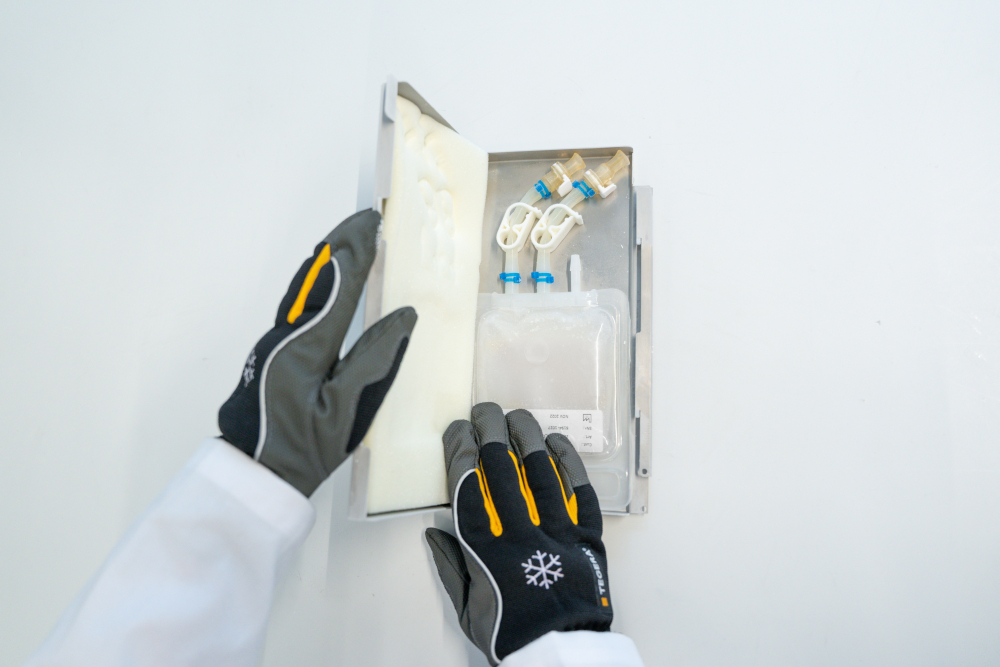
Cell banking services
As the field of biotechnology continues to advance, specialized companies offer a range of cell banking services to support researchers, biopharmaceutical companies, and other stakeholders in preserving and utilizing valuable cell lines.
Services include a wide range of offerings, such as long-term cell line storage, stem cell banking, characterization, and testing. With expertise in cell banking processes, these companies act as invaluable partners for researchers and biotechnological companies seeking efficient and reliable preservation of their cell lines.
In addition to storage and characterization, such life science partners conduct testing services to assess the safety and quality of cell lines. Key considerations include evaluating cell viability, mycoplasma contamination, and other essential assays. Some cell banking service providers go even further and offer tailored solutions, such as cell line authentication using advanced sequencing techniques.
Single Use Support provides cell banking suppliers with the right equipment to handle fluid and cold chain processes quickly and securely. Their advanced systems based on single-use technologies make cell banking safer and faster.
Maintenance of cell banks
Once established, proper long-term preservation and management of cell banks ensure continued availability and usability of cells or stem cells.
Ensuring the long-term preservation of cell lines
The primary objective of cell bank maintenance is to ensure the long-term preservation of cell lines. This involves storing the cells in conditions that maintain their viability, genetic stability, and functional properties. Cell banks are typically kept at cryogenic temperatures, often using liquid nitrogen or specialized freezers like plate freezers from Single Use Support, to arrest cellular activity and prevent genetic drift.
Monitoring and documentation of activities
Cell bank activities require diligent monitoring and thorough documentation. Monitoring of the health and viability of stored cells on a regular basis helps detect any changes or deviations promptly. Precise records of cell bank activities, such as storage conditions, date of cryopreservation, and results of tests, are essential for maintaining a comprehensive audit trail and ensuring traceability.
Best Practices for Periodic Testing and Renewal
Cells should be routinely tested for cell viability, identity confirmation, and genetic stability with STR (short tandem repeat) for example. Quality control tests are performed to verify the absence of microbial contaminants, such as mycoplasma, ensuring that the stored cells remain free from harmful pathogens.5
Cryopreservation of Cells
Cryopreservation of cells is a fundamental technique in cell banking used to preserve cells at cryogenic temperatures, effectively halting their biological activities and allowing them to be stored for extended periods.
Cryopreservation involves cooling cells to extremely low temperatures, typically below -150°C (-238°F). For this process, cryoprotective agents are added to protect them from the damaging effects of freezing. The cryoprotective agents act as a shield, preventing the formation of ice crystals that can harm cell structures. This process allows cells to enter a state of suspended animation, enabling them to survive for extended durations without significant loss of viability.
Thawing is another critical step in the cryopreservation process, which requires precision to ensure cell viability and recovery. Too fast, too slow or just uncontrolled thawing can lead to cell damage. Once thawed, cells must be carefully assessed for viability and functionality.6
App Note
"Bestcellers": Controlled Filling & Freezing of Cells
Download the app note "Bestcellers" and learn more about advanced fluid management for cell culture, freezing, cell banking and cell therapy.
cGMP cell banking
cGMP (current Good Manufacturing Practices) is a set of regulations originated and checked by the FDA, ensuring the quality, safety, and consistency of cell banking. By adhering to cGMP guidelines, cell banks establish and maintain master cell banks (MCBs) and working cell banks (WCBs) with strict adherence to standardized protocols.
Compliance with GMP or cGMP is not only a regulatory requirement but also a means of instilling confidence in researchers, biopharmaceutical companies, and regulatory bodies. Meeting cGMP standards allows cell banks to obtain necessary regulatory approvals, participate in clinical trials, and ultimately deliver biopharmaceuticals/final products fulfilling critical quality attributes to the market not only in the USA but worldwide.
Safe & efficient cold-chain solutions in cell banking
Single Use Support offers innovative cold-chain solutions that not only meet regulatory standards but also drive efficiency gains through easy scalability and fast processing. The systems based on single-use technology enable seamless filling and freezing processes - and since handling with cells has to be done rapidly, processes can be finished within an hour.
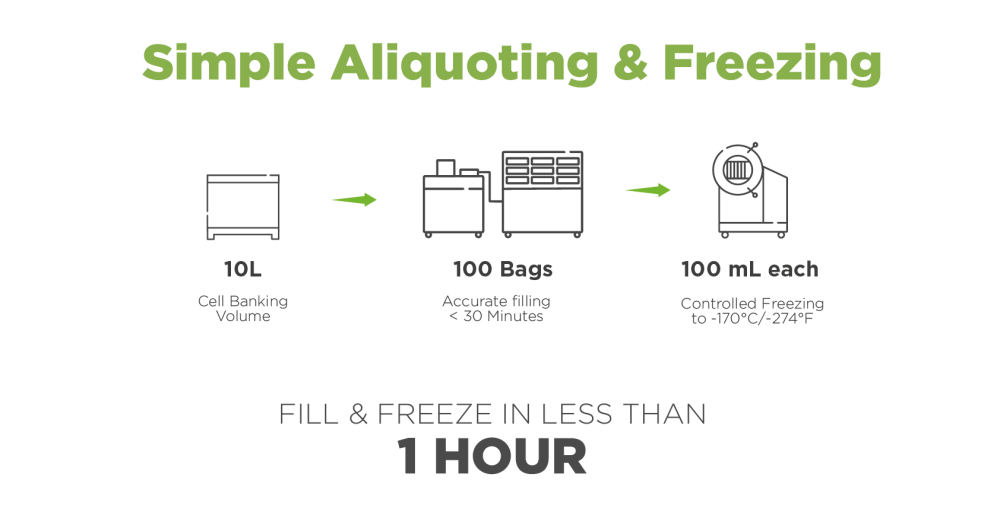
Homogenization & aliquotation of cells
With the RoSS.FILL filling system, the entire dispensing process is fully automated, eliminating human handling and errors, and in a closed system securing utmost biosafety. Cell suspension can be filled into single-use bags safely, accurately and fast. If required, the seamless homogenization solution RoSS.PADL can be added beforehand to ensure uniform filling of the bags with cells.
Freezing & thawing cells
Protected by robust single-use shells, the single-use bags are ready for safe cell freezing, storage and transport. With Single Use Support’s solutions, cells can either be frozen down to -80°C with the plate-based freezer RoSS.pFTU Lab Scale to subsequently transfer to cryogenic storage or cryogenically frozen down to -170 °C with the cryogenic controlled rate freezer RoSS.LN2F, the only controllable cryogenic LN2 freezer on the market. Thawing of the cells also works with plate-based technology, allowing for a controlled process.
Optimizations of cell viability in cell banking
Cell viability refers to the measure of the percentage of living and functional cells within a cell population. It is a key figure in cell banking, directly influencing the success of scientific experiments and biotechnological processes.
Proper cryogenic freezing techniques, such as controlled-rate freezing, are employed to minimize cell damage and enhance post-thaw recovery. Similarly, careful thawing procedures, like thawing, contribute to improved cell viability.
Single Use Support enhances cell viability with advanced cold-chain solutions. By providing state-of-the-art equipment, such as the cryogenic freezer and plate-based freeze and thaw technologies, the innovative process solution provider facilitates the preservation of cells with optimal viability for laboratories. With improved cell viability and post-thaw recovery rates, researchers and biotechnologists can conduct studies more easily and accelerate the speed of biopharmaceutical production and next generation therapeutics.
FAQs about cell banking
What is the process of cell banking?
Cell banking is the process of preserving and storing cells under controlled conditions to ensure their viability and genetic stability for future use. It involves isolation, characterization, freezing, and storage of cells, commonly used in research, biotechnology, and medical applications.
What is a cell banking system?
A cell banking system is a controlled and organized process that involves the collection, preservation, and storage of cells in vials or bioprocess containers. It ensures the availability of viable and genetically stable cell lines for various applications, such as research, drug development, and bioproduction.
How are cell banks made?
Cell banks are made through a series of steps:
- Isolation: Cells are obtained from a biological source.
- Characterization: Cells are tested for identity, purity, and safety.
- Freezing: Cells are cryopreserved with protective agents.
- Storage: Vials or bioprocess containers are stored in liquid nitrogen or ultra-low temperature freezers for long-term preservation.
What is RCB in cell banking?
RCB stands for Research Cell Bank. It is a repository of well-characterized cell lines used as reference materials in scientific research, drug development, and functional assays to ensure reproducibility and comparability of experiments.
What is the WHO Reference Cell Banks (RCBs)?
The WHO Reference Cell Banks (RCBs) are established by the World Health Organization (WHO) to provide standardized and authenticated cell lines for use in biological research and production of vaccines and biologics.
What is the purpose of cell banking?
The purpose of cell banking is to preserve and store valuable cell lines for various applications in scientific research, drug development, biopharmaceutical production, regenerative medicine, and cell-based therapies. Cell banking ensures a stable and consistent source of cells, enabling reproducibility and continuity in experiments and processes.
What are the advantages of cell banking?
The advantages of cell banking include providing a consistent source of cells for research, saving time and cost by avoiding repetitive cell isolation, accelerating drug screening, supporting personalized therapies, and fostering collaboration through shared resources.
Interview
Cell banks are made through a series of steps:
- Isolation: Cells are obtained from a biological source.
- Characterization: Cells are tested for identity, purity, and safety.
- Freezing: Cells are cryopreserved with protective agents.
- Storage: Vials or bioprocess containers are stored in liquid nitrogen or ultra-low temperature freezers for long-term preservation.
Recommended articles about cell banking
RCB stands for Research Cell Bank. It is a repository of well-characterized cell lines used as reference materials in scientific research, drug development, and functional assays to ensure reproducibility and comparability of experiments.
- Human cell lines for biopharmaceutical manufacturing: history, status, and future perspectives, https://www.tandfonline.com/doi/full/10.3109/07388551.2015.1084266, Published 2015
- Bringing Safe and Standardized Cell Therapies to Industrialized Processing for Burns and Wounds, https://www.ncbi.nlm.nih.gov/pmc/articles/PMC7317026/, Published 2020
- Mastering Cell Bank Production, https://www.biopharminternational.com/view/mastering-cell-bank-production, Published 2015
- Cell Banking, http://dx.doi.org/10.1016/B978-0-12-410396-2.00003-7, Published 2014-12-06
- Cell banking best practices, https://www.wicell.org/home/resources/cell-banking-best-practices/cell-banking-best-practices.cmsx, Published
- Britannica, The Editors of Encyclopaedia. "cryogenics", https://www.britannica.com/science/cryogenics, Published 2023



